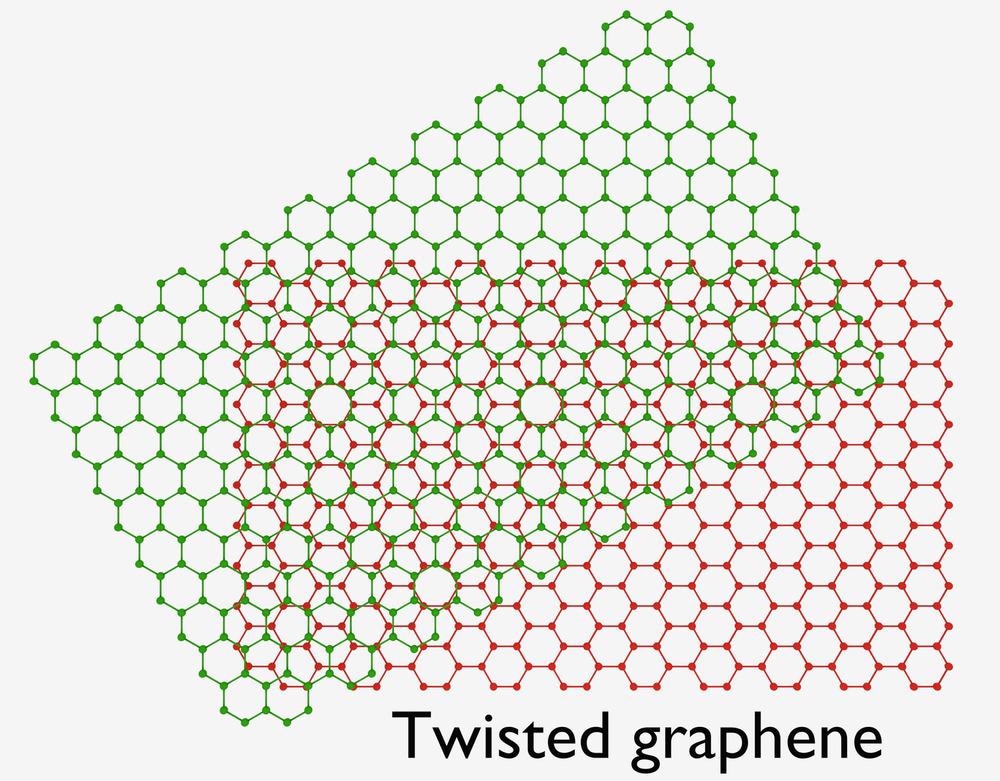Twisted graphene, a novel discovery in materials science, is capturing the attention of researchers due to its unique superconducting properties. By manipulating the orientation of stacked graphene layers, scientists have revealed the potential for lossless power transmission and advanced applications in areas like quantum computing. This remarkable form of graphene could revolutionize energy-efficient detectors, making them ideal for space exploration, where efficiency and precision are paramount. The behavior of superconductors, particularly in twisted graphene, allows electrons to form a superfluid state, enabling them to travel without energy loss. As investigations into this phenomenon deepen, the implications for technologies such as levitating trains and improved electrical systems are becoming increasingly evident.
Within the realm of material innovation, twisted graphene stands out as a cutting-edge advancement that redefines our understanding of superconductivity. This configuration of carbon layers offers new avenues for superconductors, paving the way for breakthroughs in lossless electricity transmission. The implications extend to the development of quantum devices, where energy-efficient sensors could drastically improve performance. As researchers delve into the characteristics of these twisted stacks, they unveil a superfluid of electrons that demonstrate remarkable efficiency. The exploration of twisted graphene technology not only enhances our grasp of superconductors but also promises transformative applications across multiple scientific disciplines.
The Promise of Twisted Graphene in Superconductivity
Twisted graphene, an innovative material formed by stacking layers of graphene at specific angles, has emerged as a pivotal component in the field of superconductivity. This radical approach to material design allows researchers to manipulate the electronic properties of graphene on a molecular level, leading to unprecedented superconducting behavior. By carefully controlling the twist angles, scientists can elicit unique interactions among electrons, potentially overcoming certain limitations found in traditional superconductors.
The findings from teams at esteemed institutions like Harvard and MIT have revealed that twisted graphene can facilitate superconductivity at higher temperatures than previously possible with conventional materials. This advancement offers a promising pathway towards achieving lossless power transmission, which is vital for the future of energy-efficient technologies. As researchers delve deeper into this phenomenon, the hope is to unlock new applications ranging from quantum computing to high-speed transportation systems.
Frequently Asked Questions
What is twisted graphene and why is it important for superconductors?
Twisted graphene refers to stacks of graphene layers that are rotated at a small angle relative to each other. This unique structure can lead to unusual properties, including superconductivity, where electrons can flow without resistance. This is significant because it has the potential to revolutionize superconductors by improving lossless power transmission and enabling new technologies, such as levitating trains.
How does twisted graphene improve lossless power transmission?
Twisted graphene enhances lossless power transmission by allowing electrons to flow in pairs, creating a ‘superfluid’ that mitigates energy loss. When graphene layers are twisted, they exhibit superconductive properties that enable electrical currents to travel without resistance, thus achieving efficient energy transfer over long distances.
What role does twisted graphene play in the future of quantum computing?
Twisted graphene has the potential to advance quantum computing by providing a platform for superconducting qubits. The superconducting behavior of twisted graphene allows for greater stability and effectiveness in processing quantum information, paving the way for more powerful quantum computers capable of performing complex calculations.
Can twisted graphene be used for energy-efficient detectors in space exploration?
Yes, twisted graphene can be developed into ultrasensitive, energy-efficient detectors for space exploration. These detectors can operate with minimal power while providing high resolution, making them ideal for detecting faint signals and light in the near vacuum of space, where conventional detectors may struggle.
What is the significance of the ‘quantum dance’ of electrons in twisted graphene?
The term ‘quantum dance’ describes the synchronized movement of paired electrons in twisted graphene, which is crucial for understanding superconductivity. This phenomenon challenges traditional notions of electron behavior, as it involves interactions that create a cohesive environment for superconductivity to occur, revealing fundamental insights into quantum mechanics.
How do researchers investigate superconductivity in twisted graphene?
Researchers investigate superconductivity in twisted graphene by using advanced techniques, such as microwave resonance, to measure the vibrational frequencies of superconducting electrons. This innovative approach allows scientists to probe how electrons pair and interact, shedding light on the mechanisms that enable superconductivity in these novel materials.
What potential applications does twisted graphene have beyond superconductors?
Beyond superconductors, twisted graphene holds potential applications in a variety of fields, including creating advanced materials for energy storage, enhancing battery technology, and developing lightweight, efficient electronic devices. Its unique properties make it a promising candidate for innovations across different technological sectors.
What challenges exist in the mass production of twisted graphene technology?
The current challenges in mass production of twisted graphene technology include scaling the production methods while maintaining the precise structural alignment needed for superconductivity. Achieving uniformity in twisted layers on a large scale and ensuring the reproducibility of their unique properties remains a critical hurdle for commercialization.
| Key Points |
|---|
| Superconducting Behavior in Twisted Graphene |
| Revolutionizes lossless power transmission, levitating trains, quantum computing, and detectors for space exploration. |
| Discovered by Heike Kamerlingh Onnes in 1911, superconductors transmit electricity without resistance. |
| Research by a collaboration of Harvard, MIT, and Raytheon-BBN Technology published in *Nature*. |
| Twisted graphene’s superconducting behavior challenges conventional understanding of superconductivity. |
| Electrons in twisted graphene interact uniquely due to their pairing, leading to a superfluid state. |
| Potential applications in energy-efficient space exploration detectors. |
Summary
Twisted graphene stands at the forefront of superconductivity research, offering groundbreaking advancements in energy transmission and quantum technology. By exploring the unique superconducting properties of twisted graphene, scientists aim to unlock the secrets of electron pairing that could lead to innovations in lossless power transmission and ultra-sensitive detectors for space applications. The ongoing studies in this area not only pave the way for new technologies but also deepen our understanding of quantum mechanics in two-dimensional materials.
